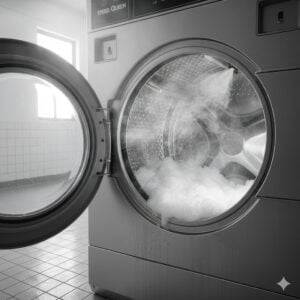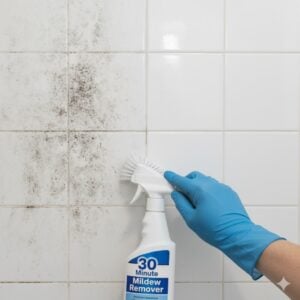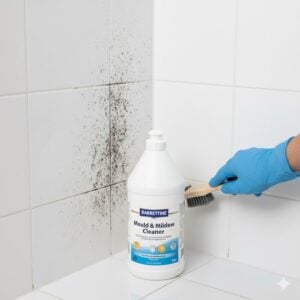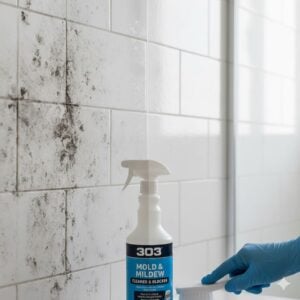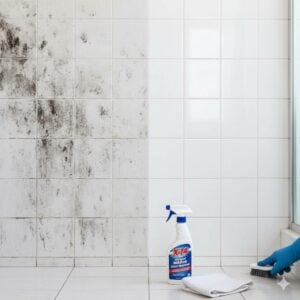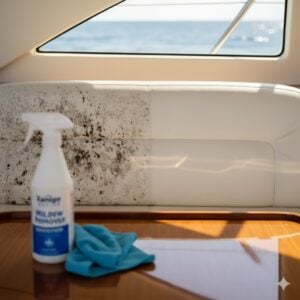Mildew might seem harmless at first — just some patchy gray spots in your bathroom or that musty smell under your sink. But in the UAE’s hot and humid climate, mildew can grow fast and cause bigger problems than you’d expect. Left untreated, it not only damages surfaces but also affects air quality and your health. If you’ve ever noticed strange spots or persistent odor, you might already be dealing with mildew, not just dirt.
In this article, we dive deep into what mildew really is, how to spot it, what causes it in homes across Dubai and Abu Dhabi, and most importantly — how to eliminate it and keep it away for good.
Table of Contents
Toggle1. What Is Mildew and How Is It Different from Mold?
Mildew is a specific type of fungus that grows on moist surfaces. It’s often confused with mold, but the two have some differences worth noting. Mildew is typically gray or white in color, with a powdery or fluffy appearance, and tends to grow on flat surfaces like walls, ceilings, fabric, and paper. Mold, on the other hand, can appear green, black, or blue, and is usually fuzzier and thicker.
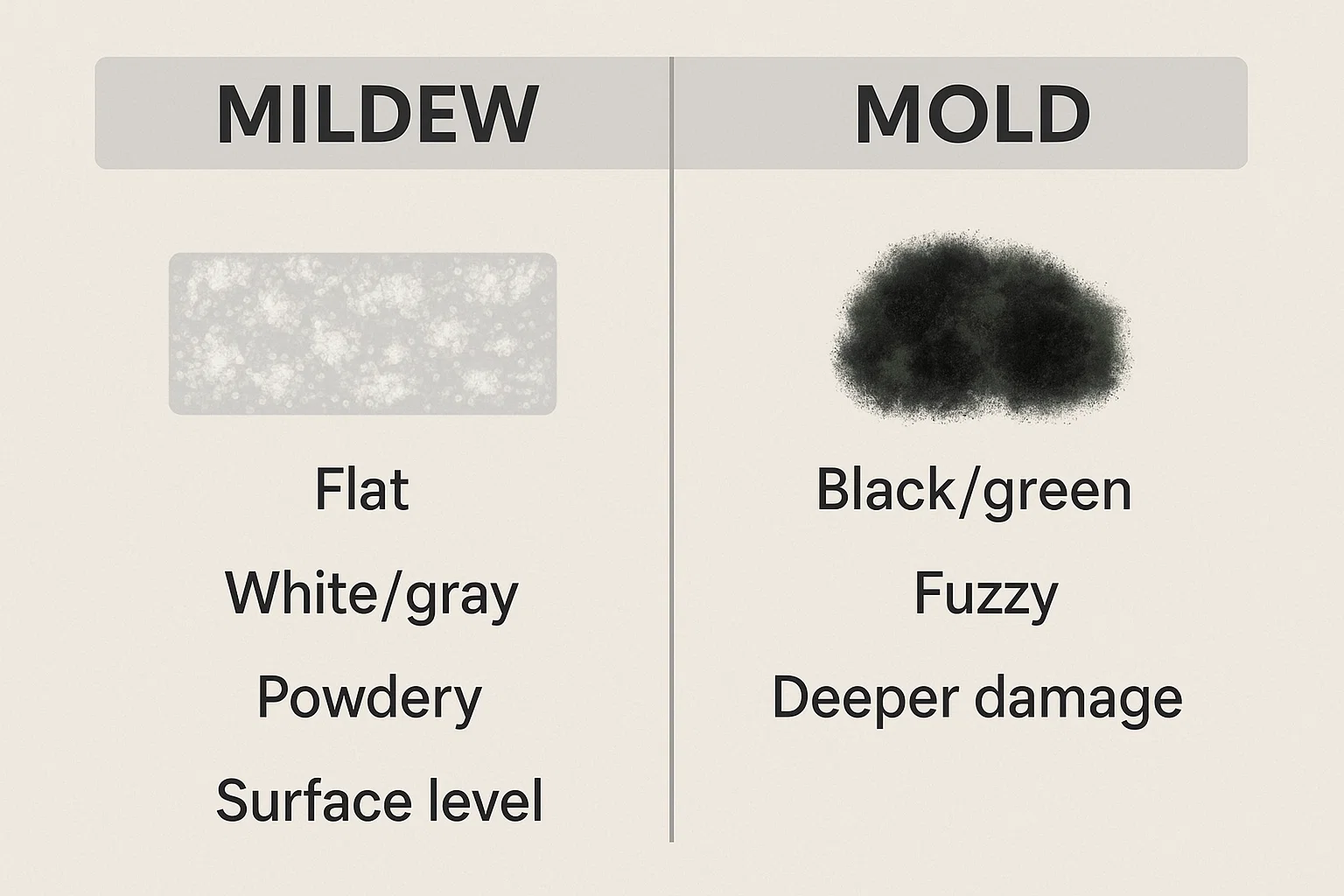
In essence, mildew is a form of mold in its early stage — it’s easier to clean but still a warning sign that humidity levels in your home are too high. It thrives in places with poor ventilation and high moisture: think bathrooms, kitchens, laundry rooms, and even inside closets.
If left untreated, mildew can spread quickly and become a full-blown mold problem that’s harder and more expensive to remove.
2. What Causes Mildew in UAE Homes?
Living in the UAE means living with air conditioning — almost nonstop. But that cool air doesn’t always mean dry air. In fact, poor AC maintenance and insulation can trap moisture indoors, especially in older buildings or apartments without proper exhaust systems.
Here are common causes of mildew buildup in UAE homes:
- High humidity: Even in a dry desert climate, indoor humidity can spike due to poor ventilation or water leaks.
- Condensation: Windows and corners collect moisture, especially with AC units running full-time.
- Hidden water damage: Leaks from pipes or ceilings provide perfect breeding grounds for mildew.
- Improper ventilation: Bathrooms without exhaust fans or kitchens without windows hold moisture for hours after use.
- Dust and organic material: Mildew feeds on fabric, wallpaper glue, drywall, and even soap residue.
Simply wiping surfaces isn’t enough if the moisture keeps coming back. That’s why it’s essential to find and fix the root cause — before mildew becomes mold.
3. Signs You Have a Mildew Problem
Because mildew grows on visible surfaces, it’s usually easier to detect than hidden mold. Still, many people mistake it for dust or just discoloration, especially in early stages. Here’s how to tell if it’s really mildew:
- Discoloration: Look for gray, white, or yellowish patches that spread slowly on walls or ceilings.
- Musty smell: A damp, sour odor is one of the first signs of mildew growth, especially in closets or under sinks.
- Surface damage: Peeling paint, warped wallpaper, or damp patches may be hiding mildew underneath.
- Recurring moisture: If an area keeps getting damp after cleaning, it likely has a mildew issue waiting to regrow.
You can do a quick test by dabbing the spot with a cloth dipped in diluted bleach — if it fades or disappears, it’s likely mildew. If it doesn’t, you may be dealing with deeper mold layers.
4. How to Get Rid of Mildew Effectively
The good news? Mildew is usually easier to remove than mold — as long as you act quickly and use the right method. Here’s a safe and effective cleaning method for small patches:
- Open windows and doors for ventilation.
- Wear gloves and a mask to protect yourself from spores.
- Mix one part bleach with three parts water (or use a store-bought mildew remover).
- Scrub the affected area using a stiff brush or sponge.
- Let the solution sit for 10–15 minutes, then rinse thoroughly and dry.
For fabrics like curtains or bedding, washing with hot water and vinegar can help eliminate mildew stains and odor.
But be warned — if the mildew keeps coming back after multiple cleanings, or if it covers more than 1 square meter, it’s time to call a professional service like Bio-On. We can inspect, clean, and treat the affected areas with industrial-grade solutions that last.
5. How to Prevent Mildew in Your Home
As with most things in home care, prevention is way easier (and cheaper) than dealing with the problem once it grows. Mildew can return quickly in the same spot if humidity and ventilation aren’t improved.
Here’s what we recommend for long-term mildew prevention in UAE homes:
- Use dehumidifiers: Especially in bedrooms, laundry areas, or basements.
- Fix leaks immediately: Even a small drip can feed mildew in hidden areas.
- Ventilate daily: Open windows for 30 minutes in the morning or after showering.
- Install exhaust fans: A must-have in bathrooms and closed kitchens.
- Clean AC filters monthly: Dirty filters trap moisture and bacteria, which trigger mildew growth.
- Use anti-mold paint: In high-risk areas like bathrooms or ceilings near vents.
And if you’re unsure whether a spot is just mildew or a deeper mold issue, it’s better to have it checked early. Click the contact button on the right-middle of this post — we’ll send a team to inspect and advise with no pressure.
Conclusion
Mildew may seem like a small problem, but it can be a red flag for bigger moisture issues in your home. In Dubai and across the UAE, homes are particularly prone to mildew due to constant AC use, enclosed spaces, and shifting temperatures between day and night.
We’ve helped hundreds of homeowners eliminate mildew and improve their indoor air quality — often with just a few simple changes. Whether you need a quick cleaning or full mold remediation, Bio-On is here to help.
Need a second opinion or just want that musty smell gone for good? Click the contact button on the right-middle of this post. We’ll be happy to assist!








